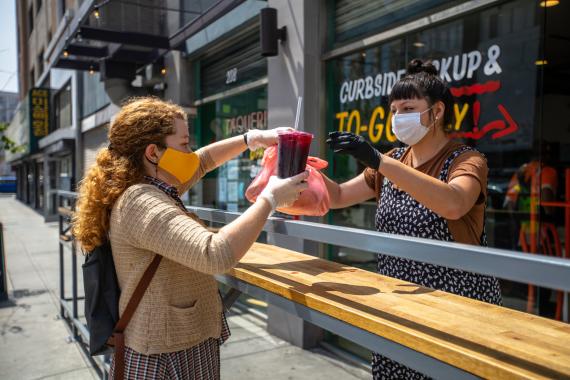Economic prediction is a dangerous profession, but when Federal Reserve Chair Jerome Powell says he’s “not even thinking about thinking about” raising interest rates you know he’s signaling something about the dire state of the economy. Like previous responses to emergency economic crises, we must utilize every available policy and monetary tool to help save jobs while stabilizing American businesses and the wider economy.
The current predicament is not the cause of the business cycle or market failure. The fundamental cause of the current downturn are the government mandated shutdown orders brought about by COVID-19. This unprecedented shuttering or restricting operations of millions of businesses, upended the business model of entire sectors of the economy — tourism, air travel, restaurants, bars, brick-and-mortar retailers, and movie theatres. Any business relying on physical customers in proximity faces daunting challenges.
We hope that this health crisis will pass soon but we could face a second wave. It is important that we identify solutions to help the thousands of American businesses and their workers impacted by the pandemic.
The issue that must be addressed is the precipitous drop in customers leading to serious cash flow problems. The U.S. Chamber’s latest survey of small businesses found that 56% of small businesses are not comfortable with their current cash flow, as compared to the average of over 80% who were comfortable with their cash flow pre-pandemic.
The administration, Congress, and the U.S. Treasury realized this problem early on and passed the CARES Act to address it. That legislation provided funding for small businesses through the Paycheck Protection Program (PPP), through contingent forgivable loans for businesses with no more than 500 employees. Despite some early glitches, the PPP has been a resounding success. Through early June, PPP loans amounting to more than $500 billion (averaging over $100,000 each) have been approved to over 4 million borrowers. And our small business survey shows this money is being used how it should be: to pay employees. Paying salaries and benefits remains the top intended use for businesses who have completed the PPP application process.
However, this isn’t enough. We also have to help ensure America’s medium and larger businesses — which employ tens of millions of Americans — get the funding they need to stay open and meet payroll.
Last week, the Federal Reserve launched the Main Street Lending Program to support midsize businesses that were in sound financial condition before the pandemic. After announcing its intent to establish the Main Street Lending Program in early April, the Fed made several changes to the program’s terms to accommodate more businesses. These changes, together with adequate oversight and lessons learned from the PPP, will help ensure that many midsize companies can meet payroll and stay in business.
As with the PPP, American banks are ready and willing to step up and offer lending through the new program. Financial institutions, which originated PPP loans, include not only “big banks,” but also credit unions, fintech companies, farm credit lenders, and others. What’s more, over 300 Community Development Financial Institutions Funds (CDFIs) approved over 95,000 loans totaling $7 billion through the PPP. CDFIs play a vital role in generating economic opportunity by lending money in some of our nation’s most distressed communities. All told, over 5,000 lenders — from big cities to rural communities — have participated.
The financial services sector is a critical contributor to our economic recovery through Federal Reserve lending facilities designed to combat the economic impact of the coronavirus. The financial services sector — acting as an intermediary for the federal government — has already helped millions of small businesses and sole proprietors across the country through the PPP and is ready to do the same under the Main Street Lending Program.
Oversight of these programs is also needed to ensure there is accountability to the taxpayer and that money is going to eligible recipients. The U.S. Chamber has backed oversight in emergency situations before, including in 2009 when we supported the TARP Transparency Act.
With robust oversight and the latest adjustments, the new program could serve as a lifeline for mid-sized businesses the same way the PPP did for small businesses. Rest assured, the financial sector is here to play its part to ensure American businesses have the funding to weather this storm and, one day, return better than ever. Together, we can do this.


